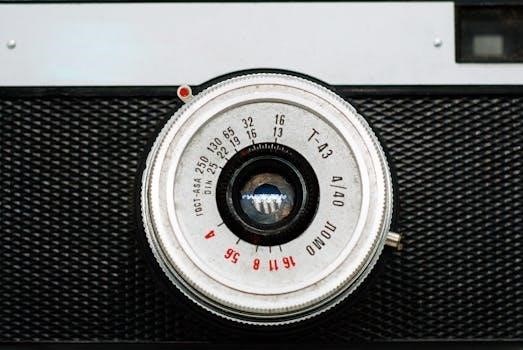The Theology of the Body, a series of catechesis by John Paul II, explores human love and sexuality within God’s divine plan. It delves into the meaning of the human body and its profound spousal significance, offering a unique perspective on personhood.
Juan Pablo II’s Catechesis on Human Love
John Paul II’s catechesis, delivered between 1979 and 1984, forms the core of the Theology of the Body, presenting a profound reflection on human love. These 129 Wednesday addresses explore the meaning of human sexuality, marriage, and the human person’s vocation to love. He emphasizes a vision of sexuality rooted in love and respect for the dignity of every person, rejecting a purely physical or utilitarian view. The catechesis aims to provide a deeper understanding of human relationships, particularly between men and women, as well as the profound spiritual significance of the body. It seeks to restore a biblical vision of human love and sexuality, demonstrating that they are integral to God’s plan. This series forms a comprehensive study of human existence and its call to love.
The Meaning of the Body in Theology
In the Theology of the Body, the human body is not merely a biological entity but a theological reality, revealing deep truths about the person. John Paul II posits that the body has a spousal meaning, expressing the call to self-giving love and communion. It is through the body that we experience and express our relationship with God and others, reflecting the divine image. The body, with its masculinity and femininity, is a visible sign of God’s plan for humanity, and it reveals the call to love. This understanding opposes a dualistic view that separates the body and soul, affirming the integral unity of the human person. The body, therefore, is not an obstacle to spiritual life but an essential part of it, a means of expressing our inner selves. It is a gift, embodying our dignity and vocation.
Key Themes in the Theology of the Body
Key themes in this exploration include original solitude, the original unity of man and woman, and nakedness without shame. These concepts lay the foundation for understanding human sexuality and love within God’s plan.
Original Solitude of Man
Original solitude, as presented in John Paul II’s Theology of the Body, refers to man’s initial experience of being alone before the creation of woman. This solitude is not a negative state of loneliness, but rather a profound awareness of self and one’s unique personhood. It is in this state that man recognizes his capacity for self-awareness, reason, and freedom. This realization allows him to understand his place in the created world and his relationship with God. Furthermore, original solitude underscores the fundamental truth that each human being is created as a unique individual, with a distinct identity and purpose. This understanding is crucial for grasping the meaning of the subsequent creation of woman and the call to communion. This pre-relational state sets the stage for the understanding of the gift of self and the need for mutual relationship.
Original Unity of Man and Woman
The concept of original unity, according to John Paul II’s Theology of the Body, describes the profound communion and complementarity between man and woman as originally intended by God. This unity transcends mere physical attraction; it encompasses a deep spiritual and emotional connection rooted in their shared humanity. Created in God’s image, both man and woman possess an equal dignity, yet they are distinct and different, designed to complement each other. This original unity is revealed in the creation narrative where woman is created from man, signifying their inherent connectedness and interdependence. This union is not about one dominating the other but rather a mutual giving of self, a communion of persons that mirrors the inner life of the Trinity. This original unity is a foundation for understanding the spousal meaning of the body and the call to loving relationships.
Nakedness without Shame
In the context of John Paul II’s Theology of the Body, the phrase “nakedness without shame” refers to the original experience of Adam and Eve before the Fall. This state signifies a complete openness and transparency, a lack of interior division or self-consciousness that would cause them to hide from each other or from God. It was a condition of pure freedom and innocence, where their bodies were seen as expressions of their personhood rather than objects of lust or shame. This original nakedness was not merely physical but also spiritual, reflecting the deep unity and trust between man and woman. It represented their ability to see each other with the gaze of love, free from any selfish desire or possessiveness. The absence of shame indicates a state of inner harmony and peace, where there was no need to conceal their true selves.
Theological and Philosophical Foundations
This section explores the theological method and phenomenological approach used by John Paul II. It examines the spousal meaning of the body, revealing its inherent capacity for self-giving love, rooted in divine design.
Theological Method and Phenomenological Approach
John Paul II’s Theology of the Body employs a unique blend of theological reflection and phenomenological analysis. This approach doesn’t merely rely on abstract doctrines; rather, it begins with the lived experience of the human person. It seeks to understand the meaning of the body through careful observation and description of human experience. This method allows for a deeper understanding of the body’s inherent capacity for love and communion. The theological reflection then illuminates these experiences in light of divine revelation and the Church’s teachings. By combining these perspectives, John Paul II offers a profound and accessible understanding of human sexuality and its purpose. This method is also about understanding our bodies as signs and symbols of our inner selves, and that these are gifts from God. The phenomenological approach emphasizes the importance of personal experience and reflection in understanding the meaning of human existence.
The Spousal Meaning of the Body
At the heart of the Theology of the Body lies the concept of the “spousal meaning” of the body. This refers to the inherent capacity of the human body to express and participate in the gift of self. It’s not merely about physical attraction or sexual function but about the body’s ability to reveal the person’s inner being and their capacity for communion. The body, in its masculinity and femininity, is designed to be a gift to another. The spousal meaning of the body finds its ultimate fulfillment in the marital union, reflecting the love between Christ and the Church. This understanding emphasizes the dignity and sacredness of the human body. The body reveals a call to self-giving love and is a sign of our ability to enter into meaningful relationships. It is not simply an object but a subject capable of expressing love, commitment, and intimacy. This spousal meaning is rooted in our creation as male and female, created for communion.
Practical Implications and Applications
This theological framework has profound implications for understanding human sexuality, marriage, and celibacy. It emphasizes the divine plan for love, respect for the body, and the sacramentality of marriage, and a call to authentic relationships.
Human Sexuality and Divine Plan
John Paul II’s Theology of the Body presents a revolutionary view of human sexuality, rooted in the divine plan for creation. It moves beyond a merely physical understanding of sex to explore its deeper spiritual and relational dimensions. The body, according to this teaching, is not just a biological entity but a sign of the person and their capacity for love and communion. This perspective highlights that our sexuality is not something separate from our personhood, but an integral aspect of it, designed by God to express love and foster unity. It challenges the modern tendency to view sex as purely for pleasure or procreation, instead framing it as a gift from God that reveals the mystery of our creation and our call to relationship. The spousal meaning of the body is emphasized, reflecting the love of Christ for the Church, thus providing a foundation for understanding the profound importance of sexual intimacy within the context of marriage, a union created in the image of God’s own relational nature. This vision proposes that our bodies are meant to speak a language of love, and it is through understanding and living out this plan that we can experience true fulfillment.
Marriage, Celibacy and Sexuality
The Theology of the Body by John Paul II offers a profound understanding of marriage, celibacy, and sexuality within the framework of God’s design. Marriage is presented as an icon of Christ’s love for the Church, a total gift of self where two become one, reflecting the communion of the Trinity. This spousal union is a way of expressing love through the language of the body, and is deeply rooted in the meaning of the body as a sign of the person’s calling to love. Celibacy, on the other hand, is not seen as a rejection of sexuality, but rather as a different way of living out the call to love, by giving oneself fully to God and his kingdom. It is a witness to the absolute nature of God’s love, anticipating the heavenly marriage, as well as a reminder of the ultimate purpose of human existence, which is to be united with Christ. Both marriage and celibacy are considered paths to holiness, each allowing the person to express the fullness of their personhood and to participate in the divine life. Sexuality, therefore, is not merely a biological function, but rather a gift that is to be understood and lived out in accordance with God’s plan, whether that is within the context of marriage or celibacy.
The Redemption of the Body and Sacramentality of Marriage
John Paul II’s Theology of the Body highlights the profound concept of the redemption of the body through Christ’s sacrifice. This redemption extends to our sexuality, allowing us to experience it in its fullness, aligned with God’s original design. The sacrament of marriage is presented as a powerful encounter with Christ’s grace, where the love between spouses is not just a human reality but becomes a sign of God’s love for humanity. This sacramental view elevates marriage beyond a mere contract, and transforms it into a path to sanctity and salvation, where couples are called to reflect the self-giving love of Christ and the Church. The redemption of the body emphasizes that our physical existence is not separate from our spiritual journey, rather it is integral to it. Thus, the body, once wounded by sin, is restored through the grace of Christ, enabling us to live out our vocations and give ourselves fully in love. Marriage, as a sacrament, is a participation in the divine mystery, a visible sign of God’s invisible grace, where couples are called to live out the love that has been made possible through Christ’s redemption.
Resources and Further Study
Numerous resources are available for further study on the Theology of the Body, including PDF versions of John Paul II’s catechesis, papal encyclicals, and other related writings, deepening understanding of human love and sexuality.
Available PDF Resources on Theology of the Body
Several PDF resources are readily available for those seeking to delve deeper into John Paul II’s Theology of the Body. These digital formats offer convenient access to the complete text of his 129 catechesis, spanning from 1979 to 1984, which explore human love, sexuality, and marriage within a theological framework. The Spanish edition, titled “Teología del Cuerpo de Juan Pablo II Vol. 1 Las Palabras de Cristo,” is available in Kindle format, which can be accessed on various devices. Furthermore, numerous websites and online libraries offer downloadable PDF versions of the complete series, often organized by audience or theme, facilitating a systematic study. These resources often include annotations, study guides, and commentaries, making the complex theological concepts more accessible to a wider audience. These PDF documents are invaluable tools for understanding this profound teaching. Some platforms also provide these resources in different languages, further expanding accessibility.
Key Papal Encyclicals and Writings
While the Theology of the Body is primarily a series of catechetical addresses, John Paul II’s other encyclicals and writings provide crucial context. His teachings on human dignity, the nature of love, and the family enrich the understanding of the Theology of the Body. Key papal encyclicals, spanning from Leo XIII to John Paul II, address various aspects of Catholic doctrine, including marriage, sexuality, and the role of the body. These encyclicals offer a broader framework for understanding the specific teachings within the Theology of the Body. Moreover, John Paul II’s other works, such as “Familiaris Consortio” and “Mulieris Dignitatem,” delve into the family and the dignity of women, providing further insight into his views on human relationships. The documents offer a historical and theological background, showing the continuity of Church teaching while also highlighting the specific contributions of the Theology of the Body. These writings are essential for a complete understanding.














